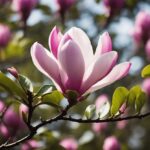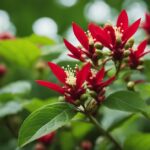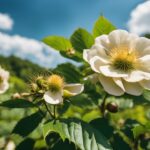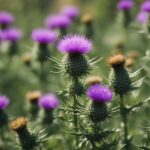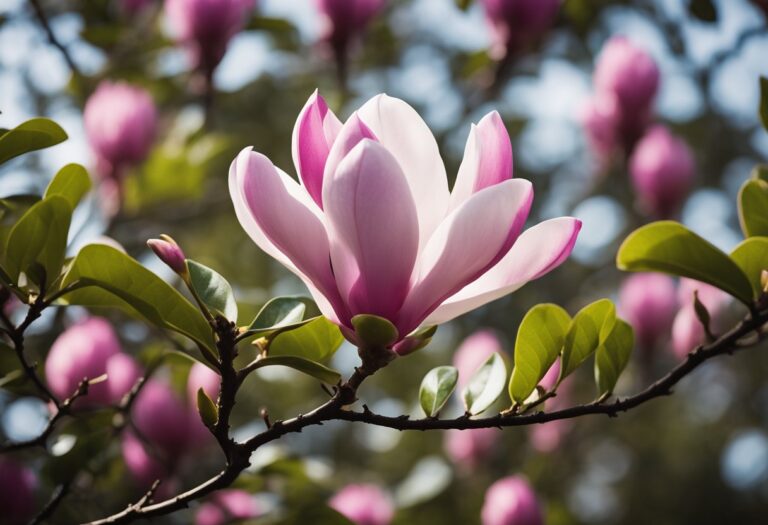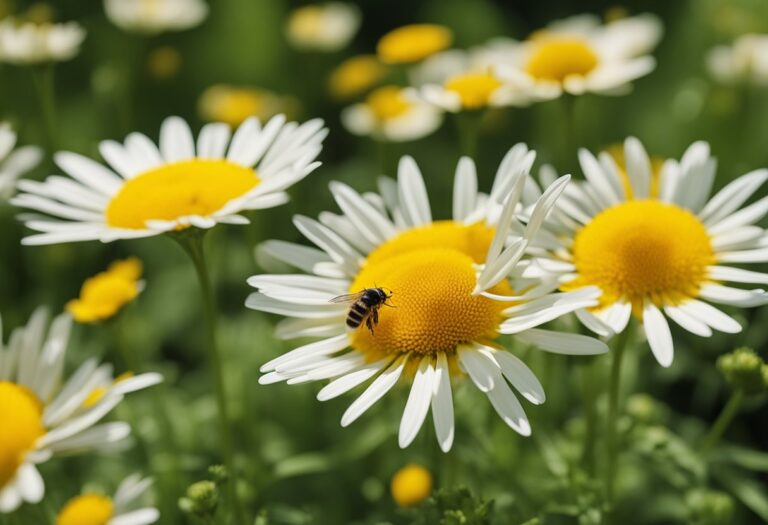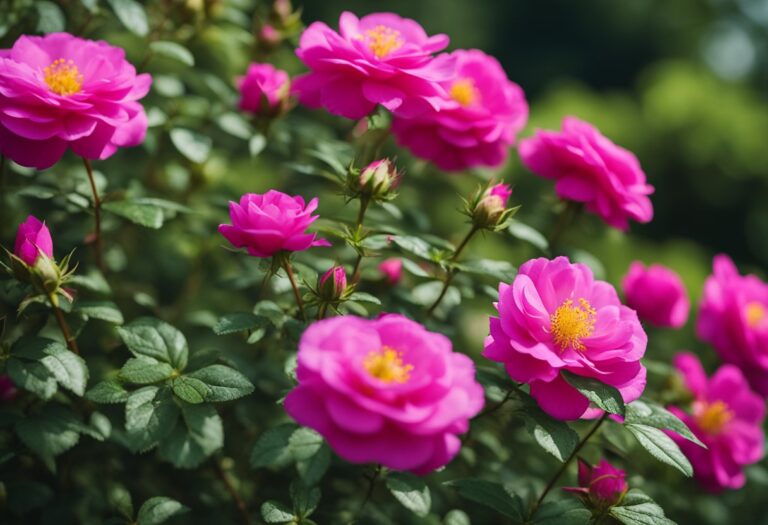Overview of Osmunda Regalis
The Royal FernOsmunda regalis
- Appearance: In the spring, young fronds emerge with a pinkish hue and mature into a bright green. Come autumn, these fronds turn a range of attractive shades. Large, well-separated leaflets characterize the Royal Fern and can grow a significant rosette of fronds.
- Fertility: A notable feature of Osmunda regalis is its rusty-brown, fertile flower spikes that appear at the tips of the fronds. These distinctive spore-bearing structures contribute to the common name “Flowering Fern”.
- Habitat: Typically found in moist environments such as woodland bogs or along streams, sometimes even in the water. It favors constant moisture and can thrive on bluffs and ledges in damp soils.
Sizes of Royal Ferns vary:
- Typical height: It ranges from 2 to 3 feet, although with adequate moisture conditions, it can reach up to 6 feet tall, forming a prominent clump.
Habitat and Distribution

Your exploration into the Royal Fern, Osmunda regalis, will reveal its extensive geographical range and specific habitat preferences.
Geographical Range
The Royal Fern is a cosmopolitan species noted for its wide distribution. It is one of the few vascular plants found on all seven continents. In the United States, you can commonly encounter this species throughout New England, which occupies various wetland habitats.
Preferred Environments
Osmunda regalis prefers moist, shaded areas, thriving best in environments that meet these criteria. You’ll frequently discover this fern in:
- Swamps
- Marshes
- Stream and river banks
The terrains it occupies are often nutrient-rich and water-logged, providing the ideal conditions for this fern to flourish. Remember that the Royal Fern favors cool to temperate climates, reflecting its global presence across diverse regions.
Growth and Structure

In this section, you’ll learn about the physical characteristics and life cycle of the Royal Fern (Osmunda regalis), which is known for its distinctive growth pattern and reproductive processes.
Morphology
Royal Fern typically grows in clumps and can reach a height of 5 to 6 feet, given adequate moisture. Its striking fronds are broadly divided and present a bright green colouration that can turn to attractive shades in the fall. Early in its growth cycle during spring, the fronds emerge with a pinkish hue before maturing to green.
- Fronds: Large, well-separated, bright green in color.
- Spring Coloration: Initially pinkish-tinted.
- Fall Foliage: Transitions to attractive shades.
- Stature: Grows in clumps.
- Height: Ranges from 5 to 6 feet tall with consistent moisture.
Reproductive Cycle
Unlike flowering plants, Royal Fern does not produce flowers. Its reproductive cycle comprises the production of rust-colored, spore-producing fronds. These fertile structures typically appear at the tips of the fronds and are critical for the fern’s reproduction.
- Spore-producing Fronds: Rust-colored, appearing in summer.
- Location: At the tips of the fronds.
- Role: Vital for propagation through spores.
The Royal Fern’s spore dissemination marks a unique reproductive cycle that contrasts with the seed production found in many other plant species.
Conservation and Threats

Your understanding of the Royal Fern’s survival hinges crucially on its conservation status and the environmental impacts it faces. These factors are key to grasping the challenges and measures necessary to preserve this species.
Conservation Status
The Royal Fern (Osmunda regalis) is not currently globally listed as a threatened species. However, local conservation statuses may vary due to differing environmental conditions and human activities. Osmunda regalis may be considered rare or under threat in some regions due to specific local factors. You need to consult local conservation lists or databases for the most accurate and up-to-date information regarding the status in your area.
Environmental Impacts
The Royal Fern’s habitat faces several environmental threats that can impact its survival:
- Habitat Loss: Conversion of wetlands for agriculture or urban development reduces the available natural habitat.
- Pollution: Water pollution from industrial run-off or agricultural pesticides can harm the delicate ecosystems where these ferns thrive.
- Invasive Species: Non-native plants can outcompete Osmunda regalis for resources, leading to declining populations.
- Climate Change: Alterations in rainfall patterns and temperature can affect wetland ecosystems, potentially making the fern’s habitat unsuitable.
Cultivation and Uses
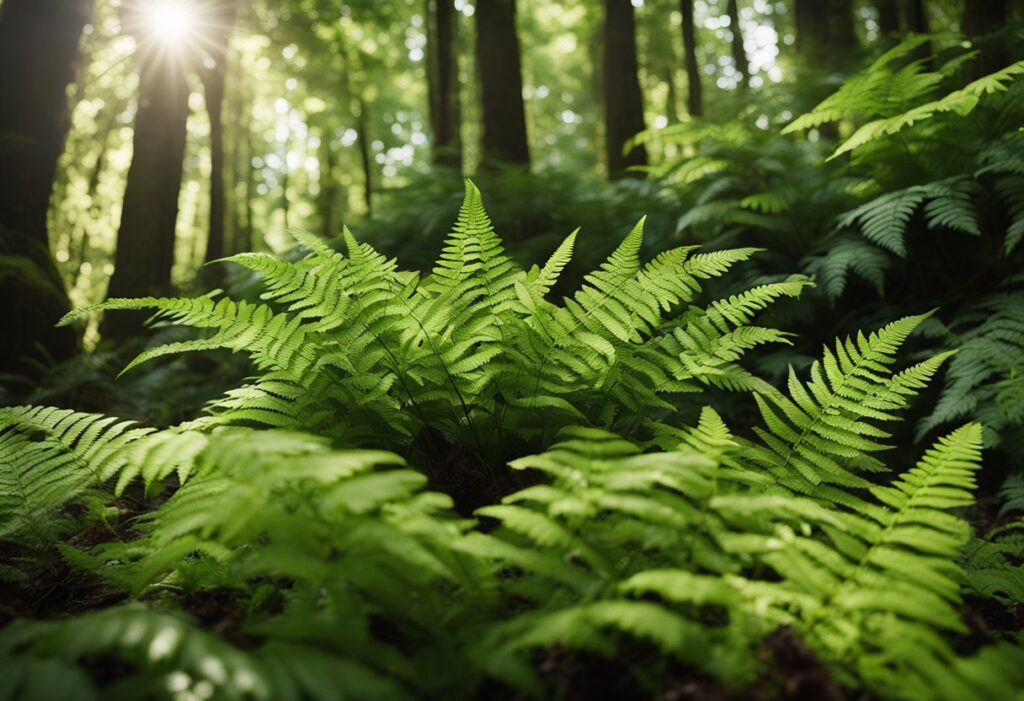
Royal Fern, Osmunda regalis, is prized for its regal presence in gardens and traditional herbal uses. Your success in growing this fern will rely on replicating its natural moist habitat and understanding its practical applications.
Gardening and Landscape
To cultivate Royal Fern effectively, you should plant it in partial to full shade in a location that mimics its natural moist or wetland habitat. Ideal soil conditions are acidic and consistently damp but well-draining.
- Site Selection: Choose a moist area near a water feature or a low-lying garden area.
- Spacing: With a potential spread of 2 to 3 feet and a height of up to 6 feet, ensure you allocate sufficient space for its total growth.
- Watering: Regular watering is crucial; Royal Fern thrives with constant moisture.
Utilize Royal Fern in your landscape for:
- Waterside plantings alongside ponds or streams
- Backdrop for smaller plants in a shaded garden bed
- Naturalizing in wetlands or bog gardens
- Creating a ‘woodland’ feel in shady areas
Medicinal and Herbal Uses
Historically, Royal Fern has been incorporated into herbal medicine for its purported health benefits.
- Folk Medicine: Traditionally used to treat various ailments, including digestive issues.
- Preparation: Leaves and roots were used to make herbal concoctions.
Note: Always consult a healthcare provider before using any plant for medicinal purposes.
Frequently Asked Questions

In this section, you’ll find concise answers to common questions about the care, propagation, climate preferences, growth expectations, and native habitat of the Royal Fern (Osmunda regalis).
What care requirements are necessary for maintaining a healthy Royal Fern?
To keep your Royal Fern healthy, ensure it’s planted in cool, moist, lightly shaded sites. The soil should be rich in organic matter, and moisture levels must be consistently high, especially if planted in full sun.
How does one propagate Osmunda regalis effectively?
Propagate Osmunda regalis by dividing the rhizome in early spring. Carefully separate the crowns, ensuring each division has a portion of the root system and frond growth.
In what climate zones does the Royal Fern thrive best?
The Royal Fern is hardy and adaptable, thriving best in climate zones from 3 to 9. This range allows for growth in various seasonal temperatures and conditions.
What is the typical growth size and height of an Osmunda regalis?
Osmunda regalis typically grows in clumps, reaching 5-6 feet tall. It can even exceed 6 feet with ample moisture, showing a broad spread of fern fronds.
Is the Royal Fern better suited for sun exposure or shade conditions?
The Royal Fern prefers partial to full shade environments but can tolerate full sun with ample and consistent moisture to mitigate the additional heat.
What is the native habitat range of the Royal Fern?
Osmunda regalis is indigenous to many places, including Europe, Africa, and Asia. It naturally grows in woodland bogs, stream banks, and sometimes in the water.

